Ultimate Wireless Router Buying Guide
What to think about when buying new a router
Last updated: March 3, 2023, 5:51 a.m.
A huge debate about using either wireless routers or wired Internet connection has already been longstanding. These days, it is essential to have an Internet connection inside your home or office, but what is even more important is using the right kind.
Some people prefer using a wired connection because they feel that it provides a faster bandwidth and more stable connection. With today's modern routers this is not necessarily the case anymore, as many advances in technology have been made in the past years.
One of the main benefits of wireless routers is the lack of cables, effectively allowing you to connect many devices without having to plan too much about where to lay the cables in your home.
It might still be wise to plan a bit on your router needs before buying the first router you see, as both its range and performance can come back to haunt you, incase you take a model that does not fit your home.
Quick comparison for the lazy Best routers in each price category
Ultra high-end routers
| Model | Rating | Price |
|---|---|---|
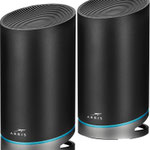 Arris
SURFboard mAX Pro (W31)
Arris
SURFboard mAX Pro (W31)
|
|
$74.50 updated 2 years, 1 month ago |
 ASUS
RT-AX88U
ASUS
RT-AX88U
|
|
$175.57 updated 2 years, 1 month ago |
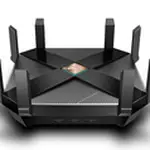 TP-LINK
Archer AX6000
TP-LINK
Archer AX6000
|
|
$169.99 updated 2 years, 1 month ago |
For a full list of Ultra high-end routers and their prices check out the best Ultra high-end routers compared and rated page, where all the stats on how routers compare to eachother in various aspects such as:
- Wifi Throughput and speed
- Hardware specs
- Editor review
The routers listed above are the best rated for the Ultra high-end category.
High-end routers
| Model | Rating | Price |
|---|---|---|
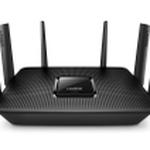 Linksys
EA9300
Linksys
EA9300
|
|
$52.99 updated 2 years, 1 month ago |
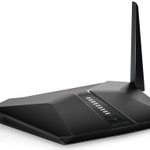 Netgear
RAX40 (Nighthawk AX4)
Netgear
RAX40 (Nighthawk AX4)
|
|
$54.90 updated 2 years, 1 month ago |
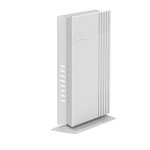 Netgear
WAX206
Netgear
WAX206
|
|
$62.99 updated 2 years, 1 month ago |
For a full list of High-end routers and their prices check out the best High-end routers compared and rated page, where all the stats on how routers compare to eachother in various aspects such as:
- Wifi Throughput and speed
- Hardware specs
- Editor review
The routers listed above are the best rated for the High-end category.
Mid- to high-end routers
| Model | Rating | Price |
|---|---|---|
 Norton
Core 517
Norton
Core 517
|
|
$34.60 updated 2 years, 1 month ago |
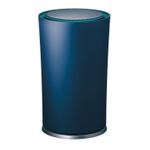 TP-LINK
TGR1900 (Google OnHub)
TP-LINK
TGR1900 (Google OnHub)
|
|
$42.50 updated 2 years, 1 month ago |
 ASUS
RT-AX1800S
ASUS
RT-AX1800S
|
|
$56.11 updated 2 years, 1 month ago |
For a full list of Mid- to high-end routers and their prices check out the best Mid- to high-end routers compared and rated page, where all the stats on how routers compare to eachother in various aspects such as:
- Wifi Throughput and speed
- Hardware specs
- Editor review
The routers listed above are the best rated for the Mid- to high-end category.
Mid-end routers
| Model | Rating | Price |
|---|---|---|
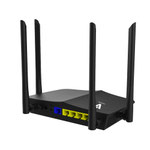 Juplink
RX4-1500
Juplink
RX4-1500
|
|
$24.32 updated 2 years, 1 month ago |
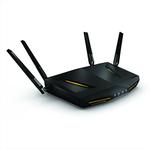 ZyXEL
NBG6817
ZyXEL
NBG6817
|
|
$25.04 updated 2 years, 1 month ago |
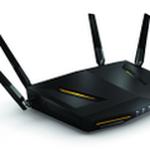 ZyXEL
NBG6817 (Armor Z2)
ZyXEL
NBG6817 (Armor Z2)
|
|
$25.04 updated 2 years, 1 month ago |
For a full list of Mid-end routers and their prices check out the best Mid-end routers compared and rated page, where all the stats on how routers compare to eachother in various aspects such as:
- Wifi Throughput and speed
- Hardware specs
- Editor review
The routers listed above are the best rated for the Mid-end category.
Low-end routers
| Model | Rating | Price |
|---|---|---|
 ASUS
RT-ACRH17
ASUS
RT-ACRH17
|
|
$25.75 updated 2 years, 1 month ago |
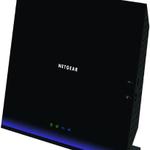 Netgear
R6250
Netgear
R6250
|
|
$22.94 updated 2 years, 1 month ago |
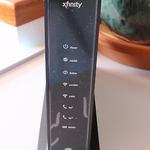 Technicolor
TC8717C
Technicolor
TC8717C
|
|
$25.12 updated 2 years, 1 month ago |
For a full list of Low-end routers and their prices check out the best Low-end routers compared and rated page, where all the stats on how routers compare to eachother in various aspects such as:
- Wifi Throughput and speed
- Hardware specs
- Editor review
The routers listed above are the best rated for the Low-end category.
Our rating system
In our router comparisons we have identified several unique metrics that will play a role, both in your decision making as well as in the performance of the devices. To determine if this model is what you need, certain aspects need to be considered. These are the following:
The average rating
The average rating illustrates how well the model is performing in contrast to other routers. In the case of D-Link Wireless AC1750 Dual-Band Gigabit Router, it has an average rating of 36/100. This means there are several better routers, but it’s not neccesarily the worst, considering that modern routers can have very good hardware.
Our Editor’s rating
This refers to the overall rating of the wireless router as determined by our site’s group of editors. At times, the editor’s rating may appear to be a lot higher than the average rating, primarily because our editors rate the router based on it’s value at the time, as well as how it compares to other models in the same segment.
Wi-Fi Speed rating
This refers to a router’s performance with regard to the transfer rate of the connection and throughput. Since some of the newer AX/AC Wi-Fi routers boast speeds up to several gbps, this value can seem low for some older devices, even if the throughput is relatively fast. so don’t stare yourself blind at the Wi-Fi score (unless you’re really looking for the best)
It might be worth to check out the real Wi-Fi throughput from the router specs as well to decide if it will be enough for your needs.
Hardware rating
This refers to how well the wireless router is performing compared with other routers when it comes to the internal hardware of the router. Most older models will have low ratings due to the coming of newer models.
The Different Router Categories
To make things easier, we have grouped the routers into 5 different segments, depending on what your needs might be.
Ultra-high-end Routers
These router models are known for their extraordinary performance. With that, they are most suited for gamers and other professionals whose productivity relies on stable connection and fast speeds.
It is also recommended for computer gaming shops seeing as the customers will not experience despondence due to an intermittent Internet connection.
These types of routers will also be a good choice for commercial offices. Most businesses require their employees to perform certain tasks on the Internet. Depending on the number of a business’s staff, the network speed can go from bad to worse. To ensure optimal productivity and keep employees interested in the tasks at hand, it is essential to have an ultra-high-end router inside the office.
These router are ofcourse much pricier and are therefore recommended for people who are prepared to reserve a particular budget for a smooth-sailing Internet connection.
High-end Routers
Even though these router models aren’t considered the best in the market, they still offer good speed and performance. For people who want a stable Internet connection but are contented with average speed, then they may find our high-end routers a good choice.
Students who need extensive research for an assignment or thesis will benefit from using high-end routers.
It can also be an excellent choice for people who are fond of watching movies via Netflix while indulging in other media such as downloading and browsing social media sites.
Although a high-end router isn’t as expensive as ultra-high-end routers, it still charges a decent amount of money. With that, the ones recommended for this router are people who are currently in the middle class.
Mid-to-high-end Routers
This is considered as the standard type of Internet connection. They are mostly for people who only want an average speed Internet connection.
The mid-to-high-end router is suitable for people who own several devices at home which they want to connect to the Internet.
People who purchase a mid-to-high-end router may browse videos online. However, the connection may become choppy when they do it at the same time while other people are playing Internet games.
In simple terms, this router is for people who use the Internet for random purposes such as music downloading, researching, social media browsing, and many more.
This is the Internet connection that most families usually have because it offers a decent Internet connection, not to mention its affordability. These types of routers aren’t expensive, but they aren’t cheap either. With that, it is recommended that a mid-to-high-end router is purchased by people who have a stable income.
Mid-end Routers
Mid-end routers offer a below-standard, yet tolerable Internet connection. It is best suited for people who are in need of a network but don’t possess a budget for a more stable connection.
The price of these routers is relatively affordable and fits the budget of most families. However, they won’t get to enjoy the speed and benefits of standard and better routers.
Students staying together may decide to purchase a mid-end router through contribution. A mid-end router isn’t fast, but it is a satisfactory speed for people who are only after for researching a few terms online for school projects and many more.
It may also be a decent choice for people who have no other use for the Internet other than checking out what has happened in their social media accounts.
Despite the slower speed compared with other models, it may be an excellent choice for people who are in need of a reliable Internet connection but are currently on a tight budget.
Low-end Routers
This is commonly referred to as a budget router due to its low price. Sometimes, people mistake low-end wireless routers and mid-end routers as the same. However, the difference between the two lies in the fact that while a mid-end router can provide a tolerable speed, a low-end router, on the other hand, can only offer a satisfactory speed after a few restart and reset of the device. There are also instances when the speed of a low-end router will fluctuate for no apparent reason.
This is the kind of router that people will only avail when they are on a really tight budget. Most of the users of a low-end router are students and jobless people.
In some instances, people would also purchase a low-end router if they are forced to reside in a specific area for a certain period of time. Instead of spending money on a decent connection for a temporary stay, they would rather go with this one.
Things to Consider When Buying a Wireless Internet Router
There are plenty of reasons to purchase a wireless router for your home or office. Regardless, it is also essential to have enough knowledge when choosing the one that will fit your needs.
The specs required for a wireless router may depend on your purpose. There is a different set of specs for people want to use a wireless router for simply surfing the web, and those who want to do lots of streaming and gaming.
Despite the differences in specs, the factors that one needs to ponder about are the same. These are the following:
Maximum Number of Devices That Can Connect to the Router
A wireless router is usually only capable of accommodating a certain number of devices, the cheaper the router, the less it can handle.
An access point is a device that is responsible for the creation of a wireless local area network either in a house or in an office. The task of an access point is to connect to the wireless router and project an Internet signal for a certain area. An access point can only accommodate a designated number of devices to provide Internet connection. Thus, there are offices or houses with only one access point, whereas some people would install more access points in order to expand the Wi-Fi capacity of their wireless router.
A large number of wireless routers can accommodate approximately 250 connected devices. Used at its maximum capacity, a wireless router is able to connect up to four devices via cable, whereas the rest is connected via wireless.
The maximum theoretical network bandwidth a wireless router can support is dependent on the access point’s speed rating.
With a 300 Mbps bandwidth connected to 100 devices, the router can only provide 3 Mbps to each of the connected devices.
Throughput Speed
Most people look at the bandwidth when choosing a wireless router. On almost every router box, the bandwidth is marked in bold letters.
However, the throughput speed is rarely shown. With that, people are led to believe that bandwidth is the most crucial in Internet speed. However, throughput speed and bandwidth have to work hand in hand to make way for a decent connection.
To understand the connection between the two, it is necessary to know what they are. Bandwidth refers to the raw ability of a router to transfer data from one input to another. This means that the bandwidth is merely the maximum capacity of the router to transfer data. Throughput, on the other hand, is the total capacity of the wireless router to transfer data. Thus, throughput refers to the actuality.
So when purchasing a wireless router, it is essential to not focus too much on the bandwidth seeing as the total speed of the connection will depend on the balance of the throughput and the bandwidth.
Where the Wireless Internet Will Be Placed
Before buying the wireless router with the highest bandwidth, it is good to note that the speed of the network will vary depending on where you place the router.
When the router is turned on, Wi-Fi signals are roaming the room. You may think that as the signal circles the room, each corner is struck. However, there are spaces called dead zones. These are places not covered by the Wi-Fi signal.
The best place for the wireless router to be placed is the center of the house, preferrably with clear sight. That way, there will be a balance for the dispersion of signal in the house.
Worth considering: Buying a Mesh Network Router
From the name itself, the task of a router is to spread Wi-Fi signals from one access point to a designated area. When the area that needs covering gets bigger, the signal also becomes weaker. As mentioned, one problem with ordinary routers is the dead zones which will annoy you when you want a good connection.
Mesh network routers eradicates this problem because it makes use of not only one, but several access points. The router links one access point to another with each access point acting as its own router. While the main access point routes a Wi-Fi signal, the rest of the access points copy the signal and re-broadcast it to the area.
With the use of mesh network routers, you can better manage Internet users. You can halt Internet connection for a certain access point, as well as create temporary networks for guests. These routers also offer streamlined connections, meaning to say that the Internet can be accessed for longer distances because the mesh network routers repeat and spread the Wi-Fi signal.
Single-, Dual- or Tri-band?
Single-band routers only support work on the 2.4 GHz frequency band. If you are after a more affordable router, then this would be an excellent choice since it is capable of providing an average network speed. However, because most appliances at home are also at 2.4 GHz frequency band, these wireless router models also have to compete with these products.
Examples of products that a single-band router has to compete with are Bluetooth devices, microwave oven, and wireless phones. If you are only after web surfing and using social media websites like Facebook, then this router would be a good thing to consider.
However, if you plan to watch episodes on Netflix or play hardcore video games, then you may settle for a dual-band wireless router. Apparent from the name, a dual-band router consists of two radios. The first one is capable of running up to 2.4 GHz band, whereas the other one can connect to a 5 GHz band.
Because 5 GHz is less crowded than the 2.4 GHz, it is capable of offering a higher throughput speed with nominal signal interruption. Thus, it is an excellent option for gaming and movie streaming.
Using a dual-band router enables the user to appoint a certain band on the application. Thus, one can monitor the load of data being consumed.
Lastly, there is the tri-band wireless router which contains three radios. The first one has a capacity of 2.4 GHz, whereas the remaining two are able to support 5 GHz. These models will suit households using different media at the same time such as file sharing, video games, movie streaming, downloading, and many more.
Router Features
The rule is the more features one gets the more that person is expected to pay. At the very least, one should aim for a wireless router with 10/100/1000 (Gigabit) Ethernet port. These ports will enable one to connect to wired devices such as desktop computers and network-attached storage.
With only one USB port, one can then start plugging a flash drive or a printer. However, when there are more ports, one can indulge in both.
If you are interested in managing the use of your Wi-Fi, then it would be a good idea to settle for a wireless router that comes with guest network feature, parental controls, and Quality of Service (QoS) options.
Parental controls will allow you to regulate the type of websites minors living in one’s household can access, not to mention the certain dates by which they can only access these sites. The guest network, on the other hand, lets people provide a separate Internet access for guests. When a user lets people share his same network to guests, his privacy becomes vulnerable. The answer is to use a separate but shared network, which is a task being done by the guest network feature.
The purpose of the QoS is to allow the user to put a priority on a certain Internet use. For instance, if one is watching Netflix movies while another person is downloading music, the owner of the network may opt to put a priority on the movie streaming activity so that blurred videos can be avoided.
All routers have their own set of security systems. One thing they all have in common is the Wi-Fi Protected Setup (WPS), which enables compatible devices to connect to the Internet. You may also use Wi-Fi Protected Access (WPA or WPA2) for a more secure network seeing as it requires the input of a password before one can connect to the Internet. For maximum security, one may want to opt for routers with WPA-Enterprise security.
Tips to Make the Most of the Router Connection
Most people think that as soon as they purchase the right router, they assume that they will get a speedy Internet connection. The pace of one’s Internet has so many factors to consider. These are the following:
Number of Devices Connected to Your Network
The more devices that are connected to a network, the slower it gets. The number of gadgets one’s network is capable of supporting can vary depending on the wireless router’s bandwidth. But also of course your internet connection speed will be the limiting factor for internet access.
Upgrade Router’s Firmware
A firmware upgrade is quite the same as a mobile app upgrade. After some time, the developer will realize that there are bugs that need fixing in the app. With that, he will release an upgrade to fix these bugs, not to mention boost the security of the app.
The same goes for firmware. When bugs occur, the speed of the Internet can be significantly affected causing the data transfer to slow down.
By keeping the firmware upgraded and updated, you can ensure acceptable network speed, not to mention a more secure network.
Set a Password
Upon the initial installation of the wireless router, there is a default access to the network. With that, a user can just click on the SSID to join the connection. Some routers even have an open guest network, that anyone can connect to, which can be problematic if your internet connection is not the best.
The more people are connected to a network, the slower it gets. To regulate the number of people able to connect to your router, you should set up a password.
Reposition the Antennas
The job of the antenna is to capture signal. Just as people reposition a radio’s antenna to get the best signal, the same could be done to get more Wi-Fi signals as well.
Routers usually have two types of antenna, namely, the internal and external. For a router that has two external antennas, it would be a good idea to position the antennas perpendicularly, the horizontal while the other is vertical.
A lot of computer engineers have said that when an antenna is working in the same plane, signal capturing is faster. A perpendicular-positioned antenna ensures that the capacity of the antenna is maximized.
If a router only has an internal antenna or a single antenna, the process can get a little tricky since it is going to take some trial and error to find the best signal.
Use a New Antenna
The default antenna being used for consumer routers are low-grade. With that, they aren’t top-notch at getting Wi-Fi signals. If you are experiencing a slow connection, a great fix would be getting an amplified aftermarket antenna. These antennas will allow one to speed up the connection without purchasing a brand new router.
Plug-in range extenders are more costly, but they can provide better signals, especially for locations with dead zones due to their wireless repeater and powered antenna features.
Switch Channels
Devices can cause congestion to your Wi-Fi signals. When you use a modern router, the connection is no doubt better than older models. However, using a modern router doesn’t guarantee safety from Internet traffic congestion.
To speed up your connection, you can change the router channel. When using a busy channel, your connection can be affected due to the number of devices you have to compete with.
The fastest approach would be to determine which channel is the idlest. You can do that by using Acrylic WiFi for Windows computers and Netgear WiFi Analytics for Android devices.
Note: Most modern routers will automatically find the best channels to work on, where there is least congestion from other networks.
Summary
wireless routers are essential in every household because apart from allowing any device to connect, it also offers a more comfortable speed, not to mention a more secure network.
Despite the golden promises of wireless routers, it is also important to learn the ways you can choose the right model. Models aren’t created equal. With that, it is essential that you are aware of your needs before making the purchase.
You can either go for a single-, dual-, or tri-band wireless router. Of course, for a better connection, it is recommended that you use a dual or tertiary connection.
Using a mesh network wireless router would also be an excellent option. Because these routers have several access points, Wi-Fi signals are permitted to circulate to wider areas.
But even choosing the best wireless router doesn’t guarantee that the connection will sail smoothly. It is also important to customize the settings so that the network speed will work in your favor. You can also shift channels so that the speed is maximized.
You can also purchase newer antennas to replace the default one since they usually offer bad signal capturing. It would also be a good idea to place the router at the center of a room for your device to capture the best signal.
For decent connection at an affordable price, it is recommended that you purchase a high-end or mid-to-high-end wireless router. These routers aren’t the cheapest, but they sure aren’t expensive either, just the right price for people who put a premium on network speed and things working without any hassle.
